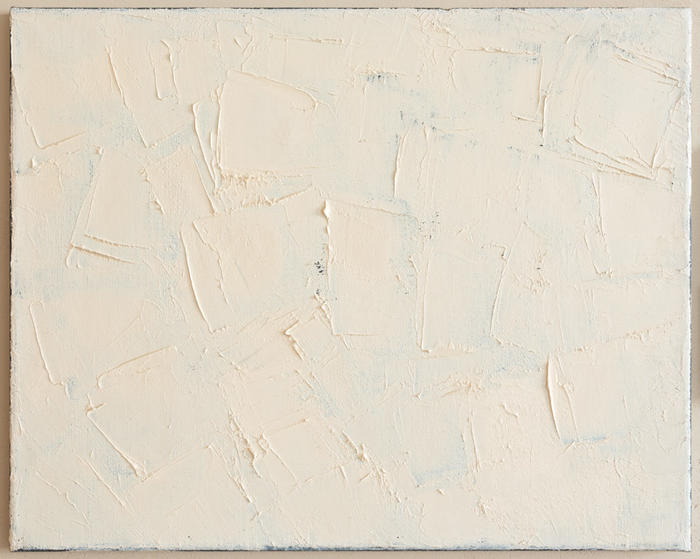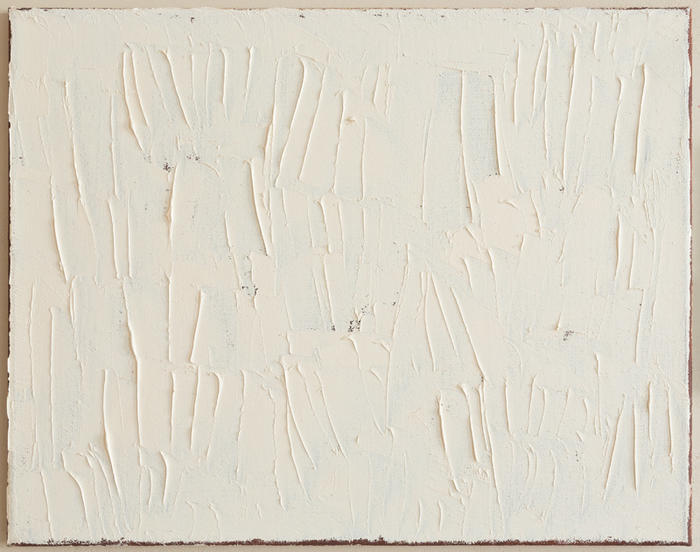Raimund Girke
1930 — 2002
Raimund Girke was one of the most influential pioneers of analytical painting. He took part in Dokumenta VI in Kassel in 1977 and became known for his examination of the colour white.
At the end of the 1950s Girke belonged to the generation of young European artists who overcame the subjectivism of abstract realism and sought new objective, reductive means of expression. He omitted the traditional composition and concentrated on arranging the color according to a line structure, even writing it on the canvas. This painterly characteristic is also formulated in many of his titles. At the same time Girke reduced the colors of his paintings to a white accompanied by blue and brown tones. These creative characteristics were always characteristic of his paintings.
In Raimund Girkes' paintings, white is not static, but in constant movement and change. White is as fleeting as it is beautiful. White is emptiness, the non-material, the calm. It is the theme and meaning of Girkes pictures. His monochromatic palette in no way means restriction, but opens up a world of its own that can be explored and expanded. In this endless, complex and nuanced universe, he searches for classical order. By dealing with white as colour and not as a concept, he takes up the tradition of "panel painting", the painting of classical antiquity and the Renaissance, in which order, colour and light took centre stage.
(Quoted after https://www.raimundgirke.com/deutsch-home/biographie/, translated by Galerie Knoell and last called 19.3.2019).
 Untitled, 1991
Untitled, 1991  Untitled, 1991
Untitled, 1991  white structure, 1991
white structure, 1991